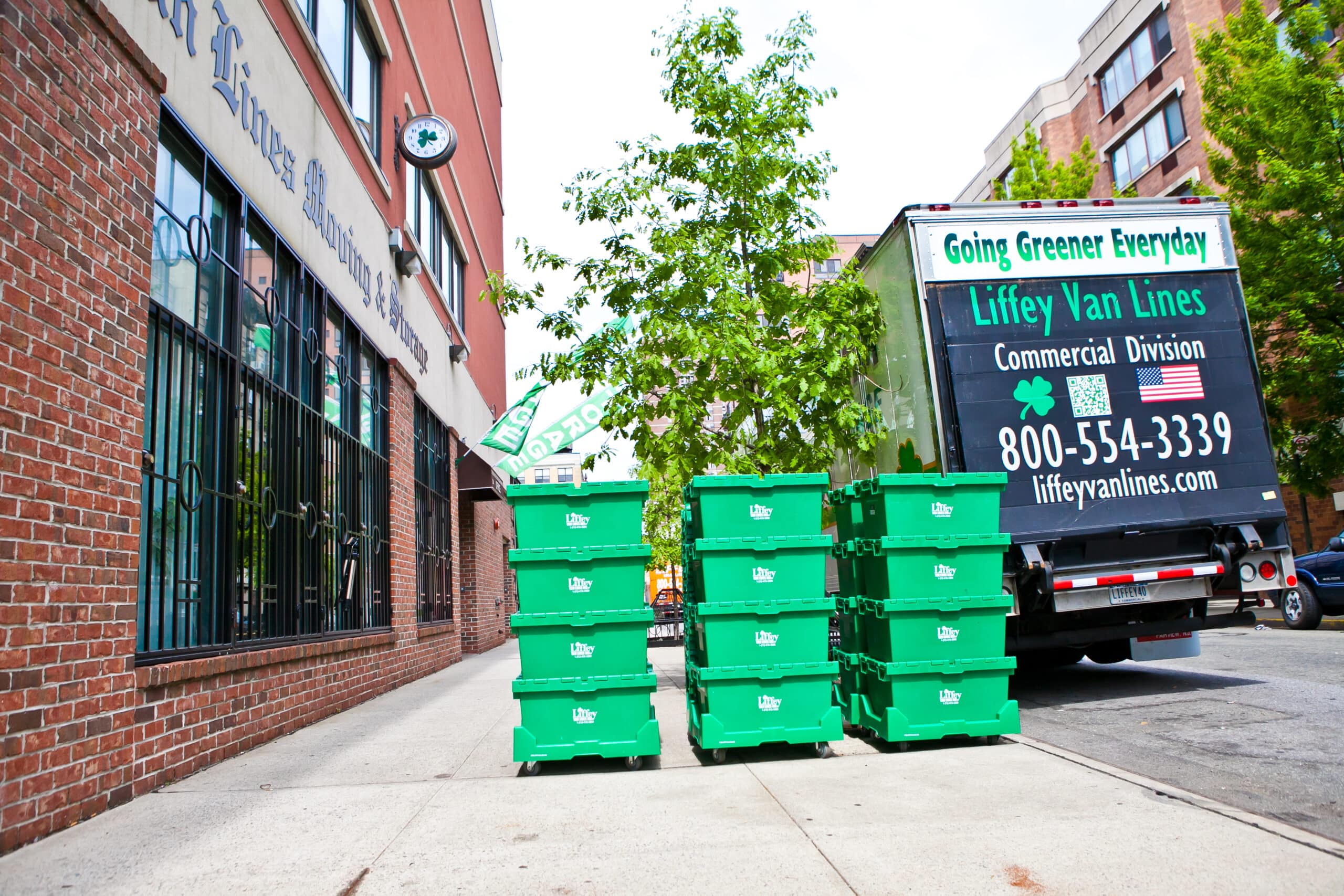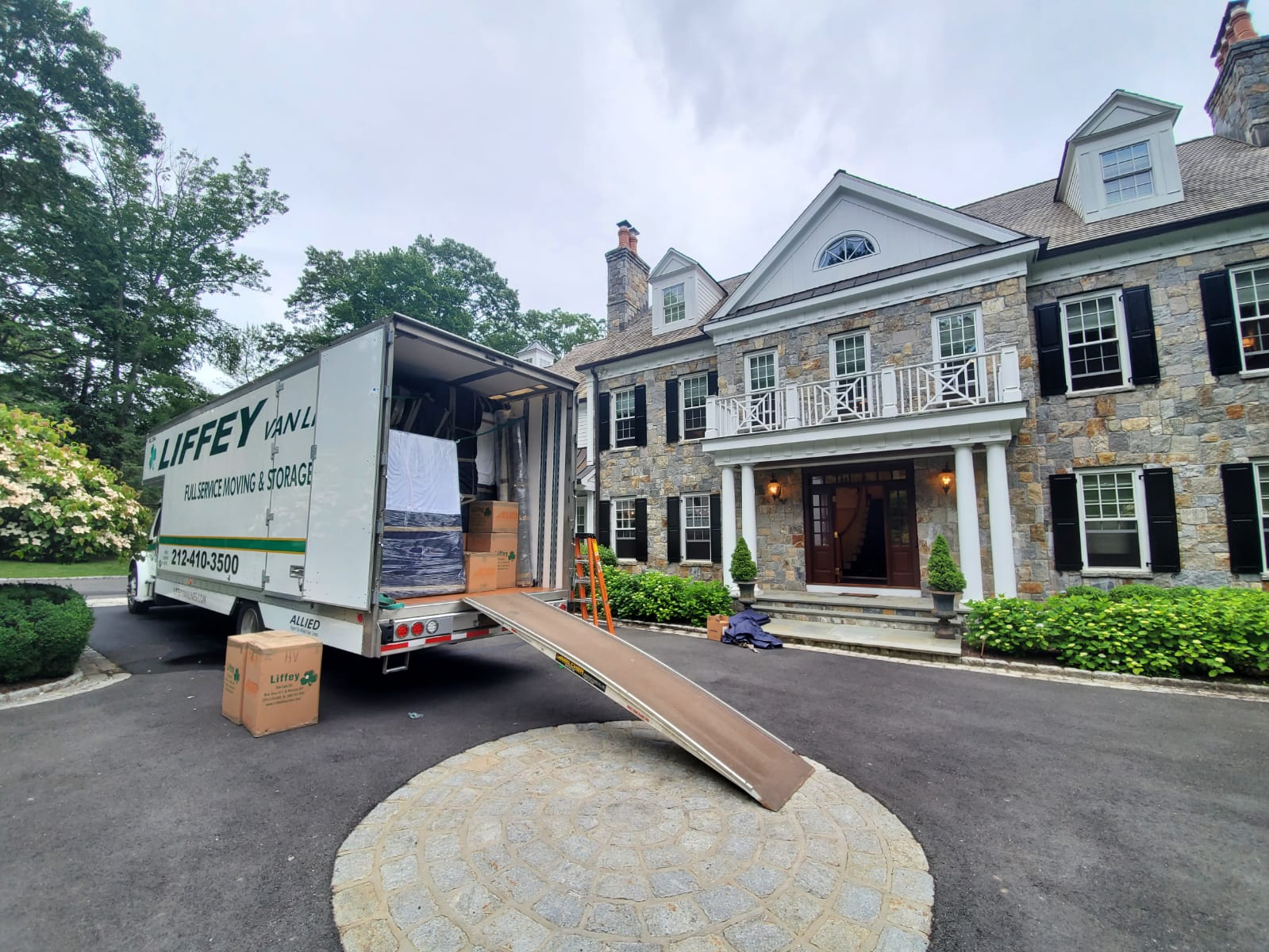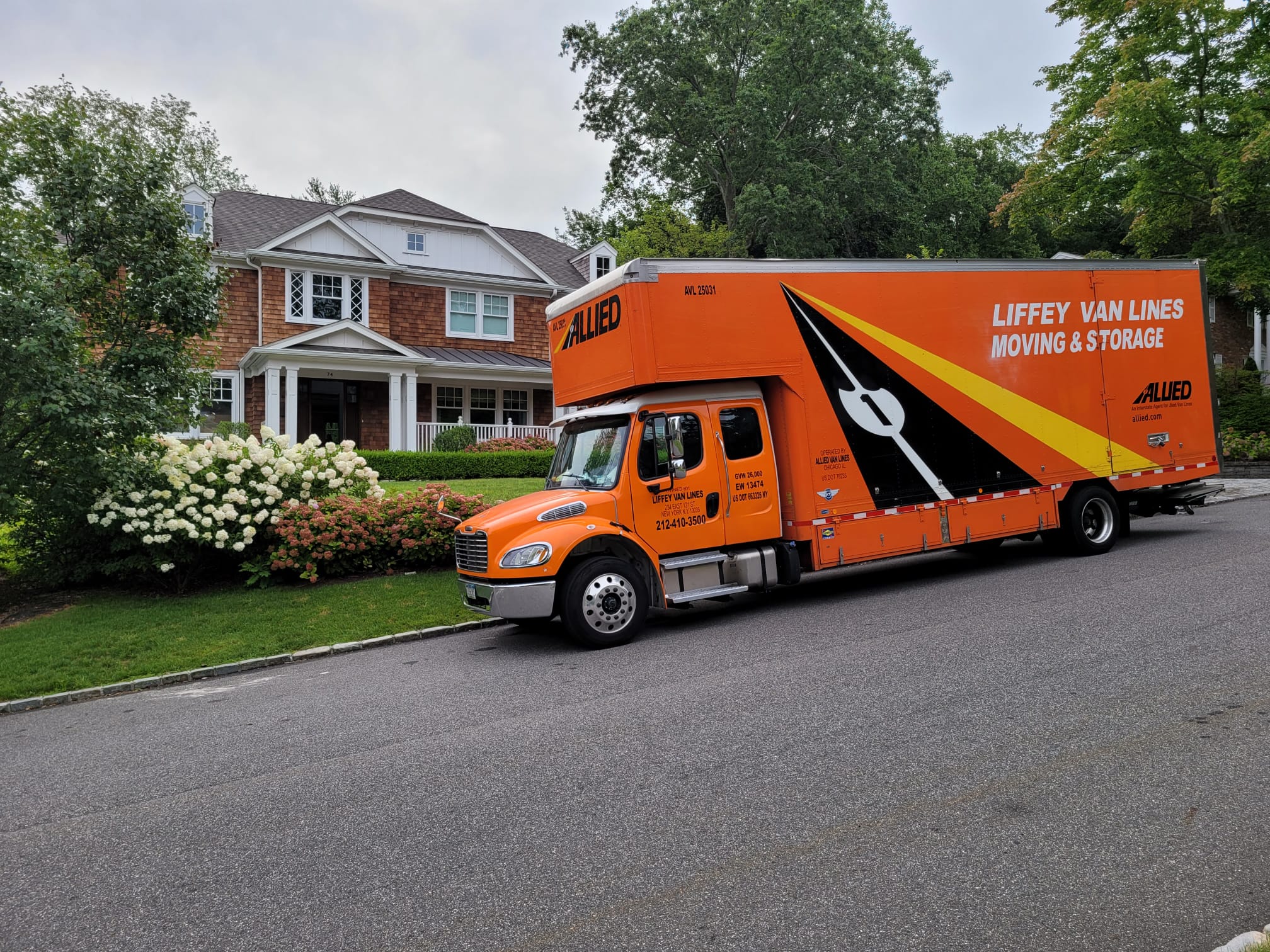Table of Contents
It’s 7:30 a.m. in Midtown, and your super just asked for a COI you haven’t secured. The truck is circling because the block is “No Standing” until 10 a.m. If you’re planning a move, understanding NYC moving permits 2025 is the difference between a smooth load-out and a stack of tickets. Here’s how to play by building rules and DOT regulations without blowing your budget.
Quick Answer: NYC moving permits 2025 aren’t a single city-issued permit. Instead, you’ll need building approvals (COI, elevator reservations), comply with DOT parking rules, and plan borough-specific access. Reserve elevators 2–3 weeks ahead, confirm COI details with management, and budget for potential parking tickets. Professional NYC movers will coordinate all of this for you.
If you’re comparing estimates, read our guide to understanding your moving quote so your plan for NYC moving permits 2025 also aligns with transparent, guaranteed pricing.
Step one: treat “permits” as a set of approvals and rules, not one form. NYC moving permits 2025 primarily mean building authorization plus compliance with parking regulations and truck access. In many neighborhoods, there’s no dedicated “moving permit,” so you need to secure time windows and follow posted signs like a pro.
For example, West 72nd Street on the Upper West Side often has weekday rush-hour restrictions. Trucks can’t stand in bus lanes or in “No Standing” zones. According to the NYC Department of Transportation parking regulations, commercial vehicles must obey posted signs and can only load/unload where rules allow. That’s why NYC moving permits 2025 planning starts with the curb—and the calendar.
Next, coordinate with your building. Many Manhattan pre-war elevator buildings require scheduled freight elevator blocks and a COI naming the owner, manager, and sometimes the lender. Without that, doormen won’t buzz you in. Align elevator time with the truck’s arrival, so NYC moving permits 2025 and building rules sync perfectly.
Additionally, some blocks in Downtown Brooklyn or Long Island City switch sides for alternate-side cleaning. You might be legal at 8 a.m., then illegal by 9:30 a.m. A seasoned crew will stage the truck, load strategically, and move on before the window closes. That’s exactly how NYC moving permits 2025 become a workable plan instead of a problem.
Pro Tip: Liffey Moving’s foremen scout your block days ahead, aligning NYC moving permits 2025 planning with posted signs and your building’s freight schedule—so the truck, crew, and elevator all match the same window.

Start with the COI. Most NYC buildings won’t allow movers in without it. For NYC moving permits 2025, your COI must list the exact entities and coverage limits required by your building. On the Upper East Side, co-ops often demand $1–5 million in liability coverage and specific wording. Confirm the sample COI from management and send it to your mover at least 5 business days prior.
Secure the elevator next. High-rises in Long Island City and Financial District towers assign 2–4 hour elevator blocks. In many pre-war buildings, elevator reservations must be made 2–3 weeks in advance and approved by the managing agent. Tie that reservation to your truck ETA, so the NYC moving permits 2025 plan keeps crew and elevator in sync.
Use the service entrance. Brooklyn Heights co-ops commonly require service-only access with floor protection and door jamb guards. In Park Slope brownstones, there’s no elevator—so the NYC moving permits 2025 plan becomes a stair strategy: extra labor, shoulder dollies, and smart staging.
Finally, share building rules with your mover. If your Hudson Yards tower restricts moves to weekdays 9 a.m.–3 p.m., your schedule must reflect that. With NYC moving permits 2025, precision beats speed. Align building approvals, then load.
Pro Tip: We generate COIs same day, coordinate freight reservations, and bring building-required protection. Liffey bakes these steps into NYC moving permits 2025 planning—no extra guesswork on move day.
You can’t treat every borough the same. NYC moving permits 2025 must adapt to local parking realities, lane rules, and access quirks. Here’s how we tailor moves across Manhattan, Brooklyn, Queens, the Bronx, and Staten Island.
Manhattan: Expect “No Standing” zones, bus lanes, and tight windows. In Chelsea or Tribeca, loading docks dictate truck placement. We plan the NYC moving permits 2025 schedule around rush-hour restrictions and loading zones. We also pre-walk the route to avoid double-parking traps.
Brooklyn: In brownstone corridors like Carroll Gardens or Fort Greene, stoops and narrow streets dominate. Alternate-side rules can force a truck relocation mid-move. We stage closest to the stoop, use shoulder dollies, and keep a floater watching the truck. That’s practical NYC moving permits 2025 risk control.
Queens: Astoria and Sunnyside often offer better curb access, but watch school zones and bike lanes. Long Island City high-rises require dock appointments and proof of insurance. We time the dock slot to your elevator block, so NYC moving permits 2025 cadence holds.
The Bronx: Grand Concourse corridors have bus lanes and hydrant spacing issues. We scout hydrants, corner clearances, and crosswalks. The goal: legal as long as possible. Staten Island: Wider roads help, but bridge toll timing and HOA rules matter. NYC moving permits 2025 still apply—just with more breathing room.
According to the DOT’s truck route guidance, trucks should use designated routes to reach local streets near the destination. We route Allied and local trucks accordingly, so the NYC moving permits 2025 plan starts the moment the truck enters the city.
Pro Tip: We assign borough-expert foremen. That local knowledge turns NYC moving permits 2025 into a workable curbside plan—legal where possible, efficient everywhere.

Budget for building fees, protection requirements, and possible tickets. NYC moving permits 2025 planning should include a line item for risk—because even smart parking can collide with last‑minute street changes.
Typical city-related costs we see:
We keep these in check by timing legal loading windows and using smaller trucks when needed. NYC moving permits 2025 planning can also include two-stage shuttling for blocks that won’t fit a 26’ box truck.
Here’s a quick comparison to help estimate impacts:
| Scenario | Likely Added Cost | Mitigation Strategy |
|---|---|---|
| Midtown weekday with bus lanes | $115–$205 ticket risk | Pre-dawn start; smaller truck; legal side street |
| Brooklyn brownstone, alternate-side day | Lost time or $115 ticket | Shift load-out 90 minutes; pre-stage items |
| LIC high-rise with dock | $50–$200 building fees | Align dock/elevator; shorten crew hours |
| UES co-op, strict COI | Time risk, access refused | Pre-submit COI; confirm names 72 hours before |
To avoid “hourly creep,” Liffey uses guaranteed flat-rate pricing. We spell out what’s covered—including COI paperwork and building coordination—so NYC moving permits 2025 don’t become surprise line items. If you’re comparing options, explore our moving services in New York and ask how we lock in costs in writing.
Pro Tip: Our guaranteed quotes include building coordination and COIs. That’s how NYC moving permits 2025 planning translates into a fixed price—not an estimate that grows.
A clean timeline keeps you in control. Use this NYC moving permits 2025 checklist to line up building, truck, and crew.
2–3 weeks out:
1. Ask management for move rules, sample COI, and freight elevator hours.
2. Send those documents to your mover for NYC moving permits 2025 planning.
3. Reserve elevator and loading dock (if applicable). Get confirmations.
7–10 days out:
4. Confirm COI language with the exact legal names and limits.
5. Share doorman’s preferred contact method with your moving coordinator.
6. Recheck posted parking signs near your entrance or stoop.
72 hours out:
7. Reconfirm elevator window and building access code/FOB process.
8. Verify crew ETA aligns with elevator block.
9. Stage items closest to the exit to compress loading time.
Move day:
10. Crew lead checks signs on arrival; adjust truck position if needed.
11. Doorman verifies COI; building opens service route.
12. Load, protect, and clear curb promptly.
If plans change, call your coordinator immediately. We flex NYC moving permits 2025 by reassigning crews or adjusting truck size. For detailed prep beyond permits, browse our practical moving tips to speed up your packing and save on crew hours.
Pro Tip: We provide a single point of contact to manage COIs, docks, and elevators. One call updates your entire NYC moving permits 2025 schedule.
For interstate and overseas relocations, the curb and building still drive the day. However, Allied’s network solves the linehaul. We handle NYC moving permits 2025 locally—COIs, elevators, and legal loading—and then hand off to a GPS‑tracked Allied linehaul for on‑time delivery.
Moving from the Upper West Side to Seattle or Miami? We’ll shuttle from a tight West 81st Street block to our larger trailer in a legal zone. That keeps your NYC moving permits 2025 aligned with DOT rules while Allied maintains guaranteed transit dates.
International moves from Long Island City or Battery Park City add export packing and customs coordination. We still start with building approvals, then coordinate with port timetables. Your NYC moving permits 2025 plan remains the foundation, from freight elevator to container pickup.
Explore our best long‑distance moving options or learn how we manage international relocations with Allied resources. We integrate NYC moving permits 2025 with coast‑to‑coast and global schedules.
Pro Tip: As NYC’s exclusive Allied agent, Liffey gives you local building expertise plus nationwide capacity—so NYC moving permits 2025 and your delivery date work together.

Seasonality matters. From May to September, building calendars fill fast. Book earlier and expect tighter elevator windows. Many Upper East Side co-ops require board approval and super sign-off for protection materials, which extends NYC moving permits 2025 lead time by a week or more.
Watch weekday rules. Midtown buildings may prohibit weekend moves entirely. Downtown Manhattan towers often cluster freight slots to avoid lobby traffic. Your NYC moving permits 2025 plan should include a backup slot, in case an earlier move runs over.
Parking realities shift by neighborhood:
For consumer protections when hiring movers, the NYC Department of Consumer and Worker Protection offers a helpful overview. See the city’s official moving in NYC consumer guidance to verify licenses and best practices. We build those standards into every NYC moving permits 2025 plan we manage.
Finally, factor in time-of-day restrictions for “No Standing” and bus lanes. If in doubt, ask your mover to pre-scout and photograph signs. That documentation anchors your NYC moving permits 2025 strategy to the actual curb, not assumptions.
Pro Tip: We schedule peak-season moves earlier in the day with backup windows. That buffer keeps NYC moving permits 2025 on track even when lobbies or docks run late.
Most neighborhoods don’t offer a single, city-issued “moving permit.” Instead, secure building approvals (COI, elevator) and follow DOT parking rules. For complex blocks, your mover will plan NYC moving permits 2025 around legal loading windows.
Reserve 2–3 weeks in advance for high-rises and co-ops. Many buildings limit moves to weekdays and require floor protection. Align your elevator window with the truck ETA for a tighter NYC moving permits 2025 plan.
It should list the building owner/manager as additional insured, the correct address, and required coverage limits. Ask management for a sample. Liffey issues COIs quickly as part of NYC moving permits 2025 coordination.
No. Hydrants, bus lanes, and crosswalks are off-limits. Your crew should pre-scout for legal loading. NYC moving permits 2025 planning includes matching curb legality with your elevator window.
Common tickets run roughly $115–$205, depending on the violation. We minimize risk by staging legally where possible and moving fast. Ask us how we budget for NYC moving permits 2025 contingencies.
Off-peak (October–April) offers better elevator availability and sometimes lower rates. Peak season (May–September) books quickly. Build NYC moving permits 2025 around earlier reservations in summer.
The building and curb rules are the same, but the linehaul is Allied-managed with GPS tracking. We align NYC moving permits 2025 locally, then hand off to an interstate schedule with guaranteed delivery dates.
For 45+ years, Liffey has coordinated buildings, curbs, and Allied linehaul into one plan. We know the city, we know the boards, and we know how to execute NYC moving permits 2025 without drama. Get your free, guaranteed‑price moving quote today. Call (212) 410‑3500 or visit liffeymoving.com/quote.


